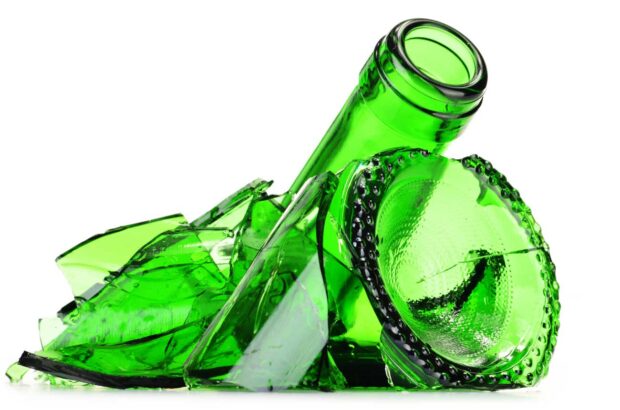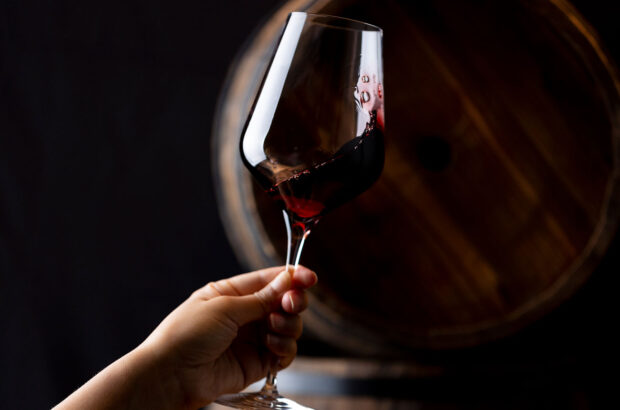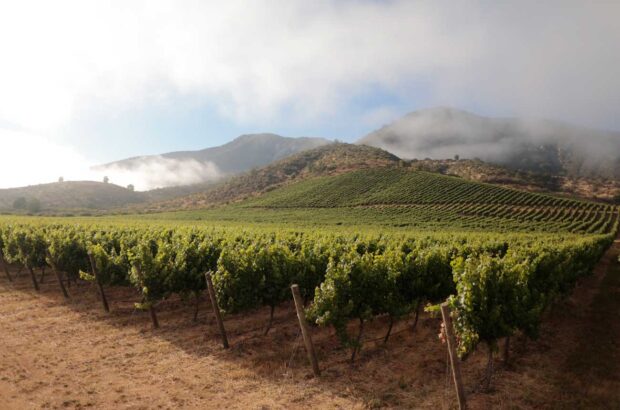Modern style Aglianico , which celebrate the grape’s robust character rather than trying to tame it, have put Basilicata firmly on the map, says Richard Baudains.
Communications have improved since the days when Mussolini used to exile political opponents to the remote mountain villages of Basilicata, but this small southern region is still decidedly off the beaten track. Basilicata forms the ankle of the Italian peninsular, between the Adriatic, Ionian and the Tyrrhenian coasts, nearly 1,000km from Milan and 350km from Rome. Most northern Italians would have difficulty placing it geographically but for anyone with an interest in wine, Basilicata is a place you definitely want to know about. It only grows one variety to speak of and has only one DOC, but the string of extraordinary new that have appeared in the last three years qualify Basilicata as one of the fastest developing and most exciting regions in the whole of Italy.
The wine that has put Basilicata on the map is a forceful red called Aglianico del Vulture. Aglianico is the name of the variety, Vulture is an extinct volcano in the north of the region. The historic growing areas lie on the steep eastern flank of Mount Vulture around the villages of Barile, Rionero and Ripacandida at altitudes ranging from around 350m to well over 500m above sea level. From here, the DOC zone extends south and east, taking in the wine towns of Lavello, Venosa and Genzano. Most recent planting has concentrated on this high plateau area, which is easier to cultivate than the slopes under the volcano and which today accounts for the lion’s share of production. Vulture has the typical climate of the high Appenines. Winters are severe and spring can be late, summers are hot and dry and the autumn unpredictable. It might seem an unpromising climate for grape growing, but over the centuries Aglianico has adapted perfectly.
The variety was probably brought to Basilicata from the colonies founded on Italy’s southeast coast by the Greeks in the 6th century BC, the generally accepted theory being that the name Aglianico is a corrupted form of Ellenico, meaning Greek.
It is an extremely low-yielding variety. ‘You couldn’t force the yields even if you wanted to,’ says Gerardo Giuratrabocchetti of the Cantine del Notaio. Aglianico is also a stubbornly late ripener. ‘In the old days, we used to pick the grapes right up until All Saints Day. Sometimes you’d be harvesting when there was already snow on the mountains,’ says Donato D’Angelo.
https://www.decanter.com/features/italy-the-new-great-estates-of-italy-247966/
It makes a wine that simply bursts at the seams with colour, alcohol, acidity and tannins. The traditional approach to this muscular raw material is encapsulated in the DOC production norms of 1971, which established what today seem anachronistic periods of ageing – three years for the quaintly named Vecchio category and five years for the riserva. Wines in this style have the classic brick-orange shade of traditional barrel ageing. They have a glycerine-silky palate, complex aromas with a liquorice, herbal character and a mineral finish.
The modern approach aims to preserve the grape’s natural character, rather than attempting to domesticate the variety through long ageing. The result is a style with huge impact. New-generation wines like Eubeo’s Roinos, the Consorzio Viticoltori’s Vetusto or Tenuta Le Querce’s Vigneto La Corona have impenetrable inky colours, concentrated berry fruit and often massive volume on the palate.
Modern vinification and barrique ageing has taken a while to work its way down the length of the peninsular but it has now well and truly arrived in Basilcata. Whether this style expresses the variety and its terroir better than the traditional one is a question that can fortunately still be approached by tasting the alternatives. Longer established producers like Tenuta del Portale or Fratelli Napolitano remain faithful to the old style, while Paternoster and D’Angelo offer a range that includes both.
Until the mid-1990s, Aglianico was a wine which, even in Italy, was easier to find in reference books than in your local restaurant. Basilicata is traditionally a region of growers and not wine producers, and the majority of the production was destined for blending and only a small percentage for estate bottling. Although bulk wine is still a key source of income for the region’s numerous cooperatives, there has been a significant increase in the production of premium bottled wines in the past five years. The trend has brought good quality cooperatives to the fore like the Cantina di Venosa (the biggest producer in Vulture) and the Consorzio Viticoltori Associati. It has seen large-scale investments by local producers such as the Pietrafesa family of Cantine Sasso and Tenuta Le Querce, and from outside the region by GIV (Gruppo Italiano Vini) and the Campania-based Feudi San Gregorio, whose new Vigne di Mezzo wines make their debut this year. It has also seen a mushrooming of small wineries, which has created an estate wine sector that barely existed in Basilicata in the past.
Shades of terroir in Basilicata
The ever increasing number of growers’ wines raises the question of terroir. Vito Paternoster is one of a group of producers who believes that the current DOC zone is far too large and would like to see revisions to the DOC to incorporate the definition of sub-zones. The issue is mainly about soils. As you move away from the side of Mount Vulture towards the plateau of Venosa, you leave behind the volcanic terrain of the historic growing area and enter one of predominantly calcareous clay. ‘Aglianico from the Barile-Rionero-Ripacandida area has the mineral quality that you get from volcanic soils and an aroma and finesse that comes with extreme night-day temperature variations. It is quite different to the wine from around Venosa, which is hotter and broader,’ says Paternoster.
https://www.decanter.com/wine-reviews/italy/basilicata/paternoster-don-anselmo-aglianico-del-vulture-2010-23295
Not everybody goes along with this theory. Gerardo Giuratrabocchetti, who has vineyards planted with the same clones and the same training systems in both areas, says he sees only minimal differences between the yields, harvest dates and grapes analyses in the different zones. ‘In percentage terms, the human factor, in the sense of vineyard management, counts for 70% and soils for 30%’. Taste and decide, but this could well be a strictly local debate. My impression is that the robust character of the variety tends to outweigh the differences of terroir – both areas produce high quality wines.
Donato D’Angelo says that on Vulture vintages are ‘either great or terrible’. The past 10 years have seen a lot of great vintages and no terrible ones. Even the more difficult vintages like 1996 or 2002 (the only years when Paternoster did not bottle its special-selection Don Anselmo) are far from a write-off. The best recent vintages to look for are 2001 and 2003. Few wines from pre-1998 wines remain in circulation.
Aglianico vintage Guide
- 2003 **** Vulture was one of the few Italian regions to escape the negative effects of this heatwave vintage. Big, ripe wines with lots of fruit. Keep
- 2002 *** Difficult year. Lacking the solidity of the best vintages, but vigorous Aglianico character with juicy fruit. Drink
- 2001 **** Great power, fruit and balance. The top selections are for long ageing. Keep/drink
- 2000 **** Hot, forward vintage with the ripe fruit and soft tannins which favour the modern style of Aglianico. Drink
- 1999 ***** Big, austere vintage with great depth and staying power. Some excellent traditional-style wines. Drink/keep
- 1998 **** Good quality, homogeneous vintage still drinking well. Drink
- 1997 ***** Full-bodied wines made almost exclusively in the traditional style. Drink
- 1996 *** Will not go into the history books. Skip
- 1995 ***** Highly regarded vintage, for fans of the traditional riserva style. Drink







